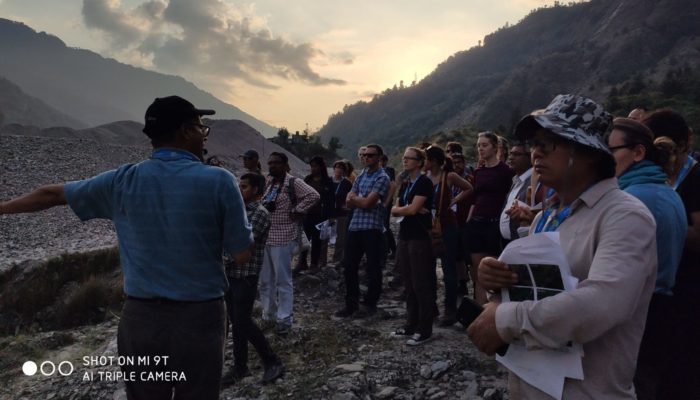
Throughout the year, EGU hosts a number of meetings, workshops, and conferences for the geoscience community. While the EGU’s annual General Assembly brings more than 15,000 scientists together under one roof, the EGU Galileo Conferences allows a smaller number of scientists to discuss and debate issues at the forefront of their discipline. In this blog post, the organisers of the 6th Galileo Conference “Perturbations of earth surface dynamics caused by extreme events” reflect on a week of insightful presentations and discussions on rare and catastrophic events.
“How do extreme events perturb Earth surface dynamics?” This question kept us busy during the entire week of the 6th EGU Galileo Conference “Perturbations of earth surface dynamics caused by extreme events”, which took place in Nepal from 13-19 October 2019. As organisers, we had aimed for a slightly unusual conference venue. We kept the nice hotels to a minimum of two nights and took the participants out to the Bhote Kosi for some camping for the remainder of the week to foster discussions and idea exchange.
The Bhote Kosi valley, about four hours’ drive north east of Nepal’s capital city Kathmandu, was heavily impacted by the April 2015 Gorkha earthquake and a subsequent glacier lake outburst flood event in 2016. This valley still today carries the signs of these earlier events in the form of large landslides, unstable slopes, and reworked river beds. As such, the valley serves as an ideal natural laboratory to better understand and quantify how the Earth’s surface responds to such perturbations. The Bhote Kosi had been a basecamp for a number of us studying natural hazards during the multiple field campaigns organised after the Gorkha earthquake, and this conference was a great opportunity to share what we have learned over the past years while directly illustrating the conference topics.

This conference brought together scientists studying a range of rare/extreme events and their broader impacts on Earth surface processes, biogeochemical cycles and human systems. Credit: Monique Fort
What seemed easy in the early days of planning did not come without inevitable doubts as the conference came closer. How do we make sure we have enough tents for everyone, how do we deal with the frequent power cuts, how do we make sure to cater enough local beer to thirsty geoscientists, and what if everyone contracted food poisoning? Fortunately, 60 participants, including ten Nepali colleagues and many early career scientists, blindly followed us without much afterthought and we were off for a busy and promising week.
The talks and posters covered most extreme event triggers: from earthquakes to volcanic eruptions and from wildfires to storms and tsunamis. These presentations provided food for thought for the geomorphologist, the geochemist, and the seismologist alike. Nepal, with the aftermath of the Gorkha earthquake, was well represented in these presentations, but many other parts of the world were covered as well.
https://twitter.com/KristyGuerin/status/1185103540592627713
Overall, this conference demonstrated the role of extreme events as geomorphic actors, able to shape landscapes and affect biogeochemical cycles. This conference also highlighted the large range of possible geomorphic responses, both in terms of magnitude and spatial extent, suggesting that the question of how these extreme events should be defined (are they large or are they rare events?) should ultimately be left to the investigators. It is however clear that in terms of geomorphic impact, an extreme event should lead to an observable perturbation above a, to-be defined, background variability, and be followed by a recovery period that leads to an old or new steady-state. As such, extreme events are not created equal and future research is needed to understand why such a range of responses are encountered.
Conference attendees had the opportunity to discuss questions and topics at the forefront of their field, from ethics in science to international cooperation. (Credit: Monique Fort)
Time for discussion also allowed us to debate on the morality of post-disaster scientific work. We concluded that basic research questions related to these events need to be pursued and frequently require immediate mobilisation of scientific equipment and personal. However, this discussion also highlighted the need for clear and transparent international coordination so as to not interfere with relief efforts and avoid being perceived as greedy ambulance-chasing scientists. This important discussion was backed by input from a large Nepali delegation, providing an insight into how they had perceived these questions directly after the recent earthquake. Further discussions focused on the commonalities of different extreme events and the possibility to define a common framework that would allow us to compare the geomorphic impact of an earthquake to that of a storm or a wildfire.
Finally, this conference allowed us to lay the foundation blocks for future international coordination efforts. While the exact contours remain to be defined, all participants emphasised the need to prioritise research questions and resources in the case of rapid response efforts. These efforts require clear coordination with affected countries and funding bodies, but for instance also encourage scientific actors to agree on common publication strategies upfront.
Conference participants tour the Bhote Kosi valley to learn more about how extreme events can shape landscapes. (Credit: Monique Fort)
In the middle of this busy schedule, a day of field excursion provided a welcome change. From small to large, the Bhote Kosi has it all: boulders, landslides, debris flows etc… Driving up the valley all the way to the Nepal-China border provides a humbling experience of how these idyllic landscapes can be turned into deadly traps in the blink of an eye. With closer scrutiny it becomes obvious that the whole landscape has been shaped by a myriad of these catastrophic events, directly questioning the notion of extremes.
After six days of presentations, posters, and late night discussions, it was time to close this intense, yet educational week. In the end there weren’t too many power cuts, no one got sick, most of us managed to shower with hot water and only a few reported spiders in their tents. In line with the local Nepali customs, the end of the conference was celebrated by inspired dancing until late at night when the first shuttles back to the airport started to take people back to Kathmandu.
By Maarten Lupker, ETH Zürich, Switzerland
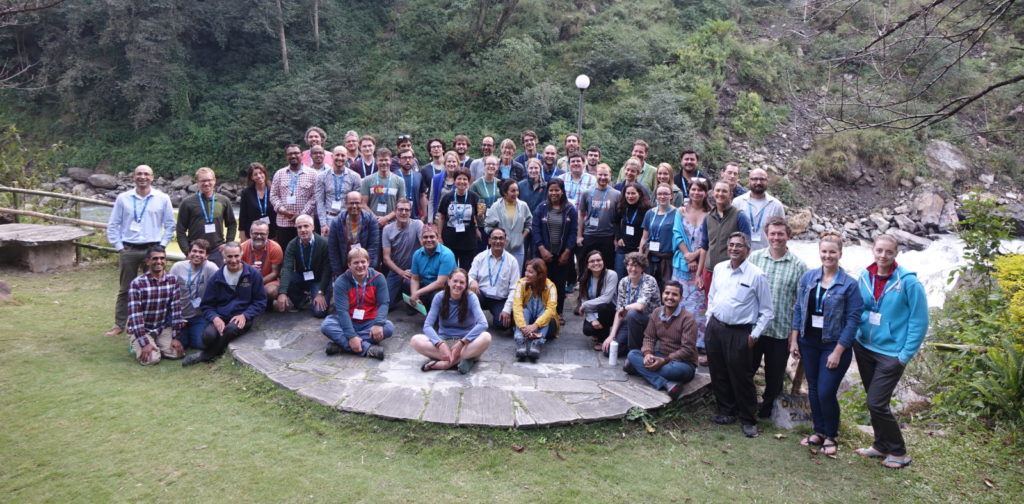
60 scientists from all over the world came together for the opportunity to debate and discuss issues related to rare/extreme events and how they impact Earth system dynamics. Credit: Monique Fort
Acknowledgments
This conference was jointly organised with the Nepal Geological Society (NGS), without which this week would have never existed. While many people were involved, we would like to extend special thanks to Basanta Raj Adhikari and Ananta Prasad Gajurel from Tribhuvan University as well as the former president of NGS, Kabi Raj Paudyal and the present one Ram Prasad Ghimire. Bhairab Sitaula also provided invaluable help in all logistical aspects of this conference.
The conference was also co-sponsored by the US National Science Foundation, which provided overseas travel grants. Support from DiGOS & GFZ Potsdam were also greatly appreciated.
The organiser team: Christoff Andermann, Kristen Cook, Sean Gallen, Maarten Lupker, Christian Mohr, Ananta P. Gajurel, Katherine Schide, Lena Märki

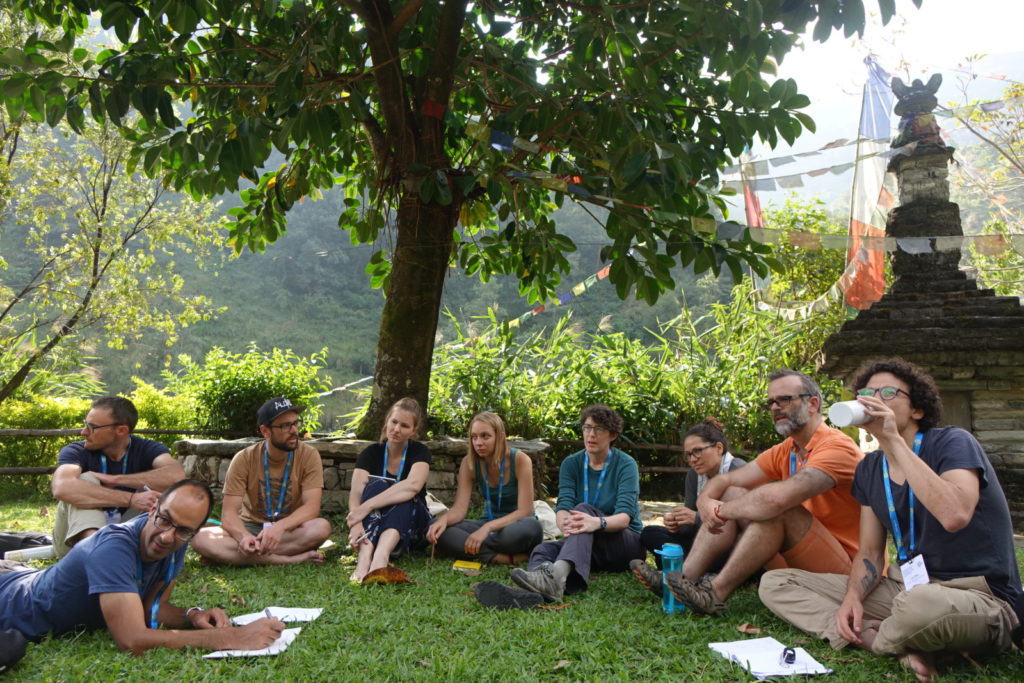
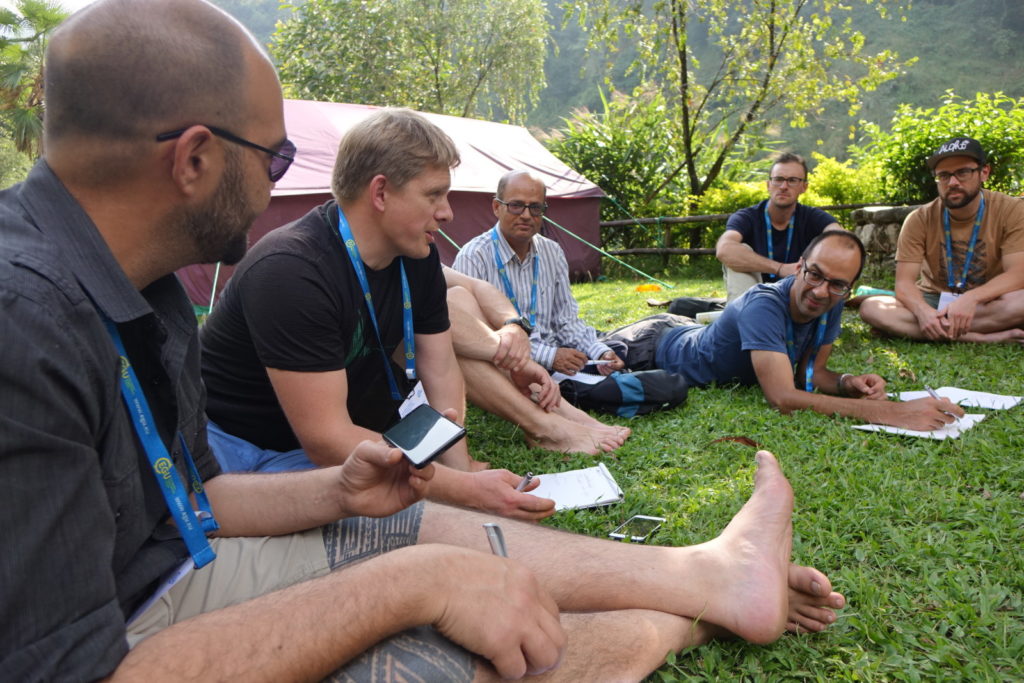
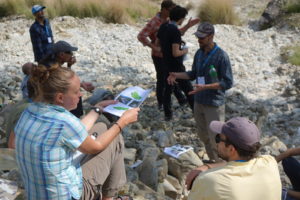
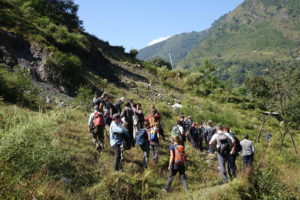
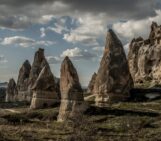
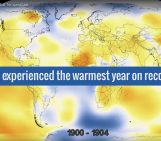
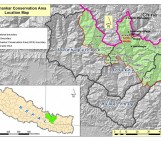

Basanta Raj adhikari
Thank you Marteen for wonderful write up. It was successful conference where both national and international geo-scientists talked about the extreme events. The most important and center point of the conference was how to do fundamental research during the extreme events and how to transfer new technology to local scientists. I am sure that this conference build a strong network between scientists to do collaborative research in near future.